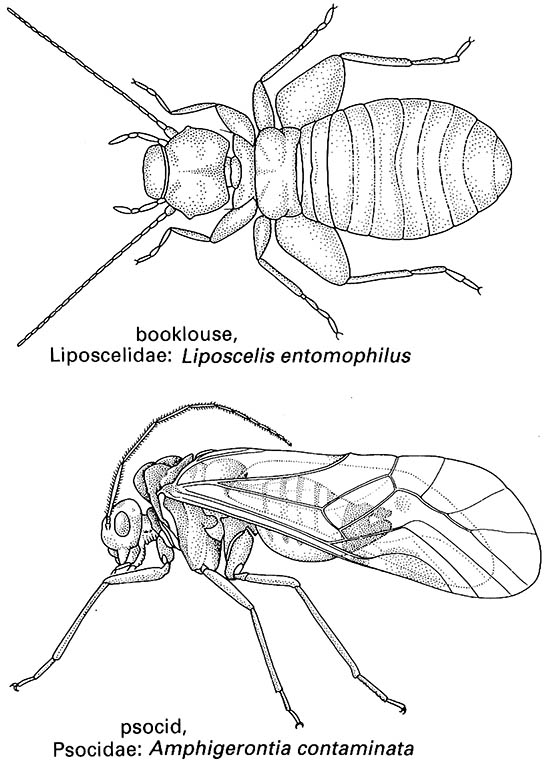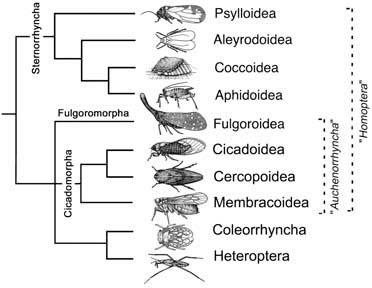Box 11.9. Psocoptera (booklice, barklice, or psocids)
The Psocoptera is a worldwide order of common but cryptic minute to small insects (1–10 mm long), with over 3000 species in 36 families. Development is hemimetabolous with five or six nymphal instars. They have a large and mobile head, and large compound eyes; three ocelli are present in winged species, but absent in apterous ones. The antennae are usually 13-segmented and filiform. The mouthparts have asymmetrical chewing mandibles, rod-shaped maxillary laciniae, and reduced labial palps. The thorax varies according to the presence of wings. The pronotum is small, whereas the meso- and metanotum are larger. The legs are gressorial and slender. The wings are often reduced or absent (as shown here for the booklouse Liposcelis entomophilus (Liposcelidae), after Smithers 1982). When present the wings are membranous, with reduced venation, with the hind wing coupled to the larger fore wing in flight and at rest, when the wings are held roof-like over the abdomen (as shown here for the psocid Amphigerontia contaminata (Psocidae), after Badonnel 1951). The abdomen has 10 visible segments, with the 11-th represented by a dorsal epiproct and paired lateral paraprocts. Cerci are always absent.
Courtship often involves a nuptial dance, followed by spermatozoa transfer via a spermatophore. Eggs are laid in groups or singly onto vegetation or under bark, in sites where nymphs subsequently develop. Parthenogenesis is common, and may be obligatory or facultative. Viviparity is known in at least one genus.
Adults and nymphs feed on fungi (hyphae and spores), lichens, algae, insect eggs, or are scavengers on dead organic matter. Some species are solitary; others may be communal, forming small groups of adults and nymphs beneath webs.
Phylogenetic relationships are considered in section 7.4.2 and depicted in Fig. 7.5.


Broken lines indicate paraphyletic taxa, with names italicized. (After Bourgoin & Campbell 2002)



